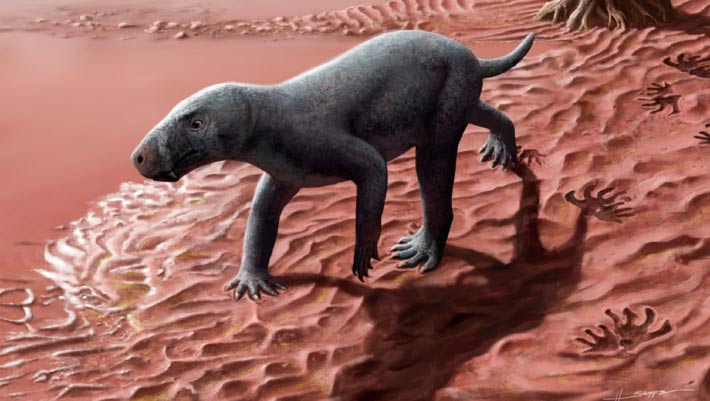Paleontologists have discovered a new species of early gorgonopsian therapsid that was part of an ancient summer wet biome of equatorial Pangea.
Therapsids were a dominant component of Permian terrestrial ecosystems worldwide, eventually giving rise to mammals during the early Mesozoic.
However, little is currently known about the time and place of their origin.
“Therapsida is a clade of diverse and ecologically successful tetrapods, with mammals as their modern representatives,” said Dr. Rafel Matamales, a paleontologist at the Museu Balear de Ciències Naturals and the Institut Català de Paleontologia Miquel Crusafont, and colleagues.
“The roots of the clade extend back to the Late Paleozoic, when non-mammalian therapsids were important components of terrestrial ecosystems.”
“Until now, the oldest known unequivocal therapsid was Raranimus dashankouensis, from probable Roadian (lower Middle Permian) deposits of central-east Asia.”
“Yet, phylogenetic analyses consistently suggest that therapsids are the sister group of sphenacodontid ‘pelycosaur’-grade synapsids, which originated in the Pennsylvanian (ca. 320 million years ago).”
“This implies a long therapsid ghost lineage spanning about 40 million years.”
The newly-discovered therapsid is the oldest of its kind, and maybe the oldest therapsid ever discovered.
This dog-like saber-toothed animal, which doesn’t have a species name yet, belongs to a group of therapsids called the gorgonopsians.
“Gorgonopsians are more closely related to mammals than they are to any other living animals,” said Dr. Ken Angielczyk, a paleontologist at Field Museum.
“They don’t have any modern descendents, and while they’re not our direct ancestors, they’re related to species that were our direct ancestors.”
“Until now, the oldest known gorgonopsians lived roughly 265 million years ago; however, the new fossil is from 270-280 million years ago.”
“It is most likely the oldest…
Read the full article here







